Retired Back Issue editor Michael Eury wants to go shopping… again!
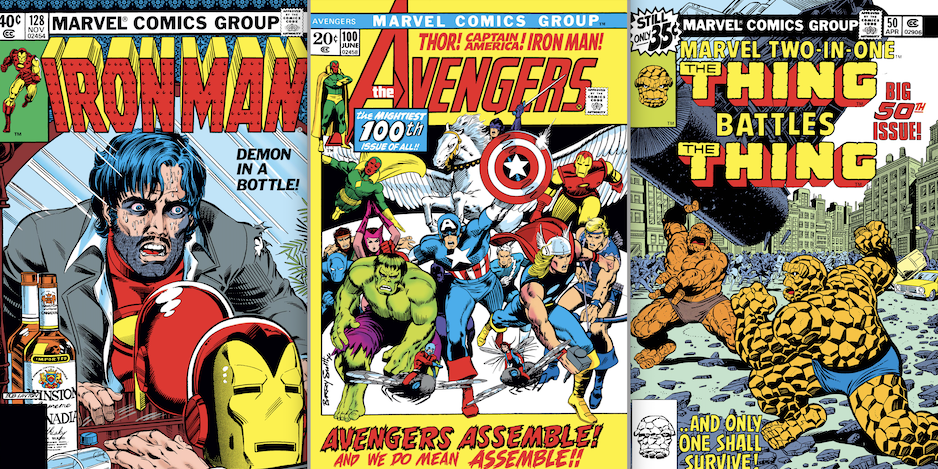
By MICHAEL EURY
After 21 years of editing TwoMorrows Publications’ Eisner Award-winning Back Issue, I retired on August 30, 2024, leaving the magazine in the capable and enthusiastic hands of new editor Roger Ash.
Having had my head burrowed into Bronze Age comics for such a long period, I couldn’t step away without sharing with 13th Dimension — and hopefully a few decision-makers at Marvel Comics — this list of the 13 MARVEL 1970s FACSIMILE EDITIONS WE’D LIKE TO SEE! (You can click here to check out my TOP 13 DC 1970s FACSIMILES.)
—
13. Sub-Mariner #67 (Nov. 1973). While he might’ve found sartorial solidarity with the near-naked Conan the Barbarian, Marvel’s Namor instead dons long pants — heck, a complete uniform, designed by Jazzy Johnny Romita! — in this landmark issue. Many fans have derided Subby’s ebon swimwear as his “disco suit,” but if you look past the Tom Jones-ish open-chested top it’s a slick look for the Scion of the Seas that unfortunately was mothballed too quickly.
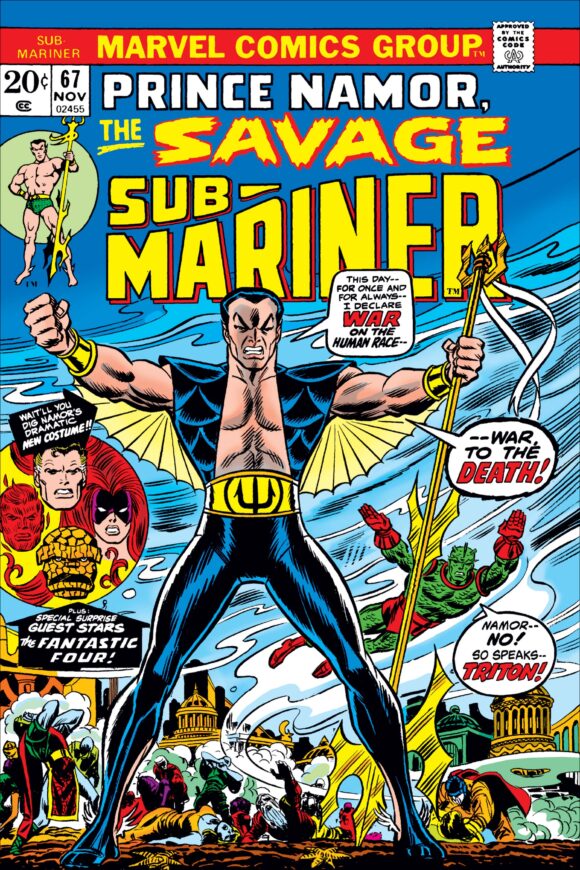
Dan adds: This is the third time we’ve done a Marvel column like this the last couple years. Anthony Durso and Jim Beard have each written one — links at the bottom — but it’s always great to get another voice, especially one of Michael’s stature. So I’m gonna chime in on his picks, like I did with his recent DC column. I’m already on record as being down with this outfit — including the groovy little ankle cutouts.
—
12. Jungle Action #6 (Sept. 1973). Writer Don McGregor’s interpretation of T’Challa, the Black Panther, anchored Jungle Action for a healthy run that included his celebrated partnership with artist “The Irreverent” Billy Graham and fed Marvel’s mythos with lore that eventually found their way into the Black Panther films. While much of this run features serialized adventures, I’ve singled out this issue as worthy of a Facsimile as it presents the first appearance of major Panther adversary Erik Killmonger.
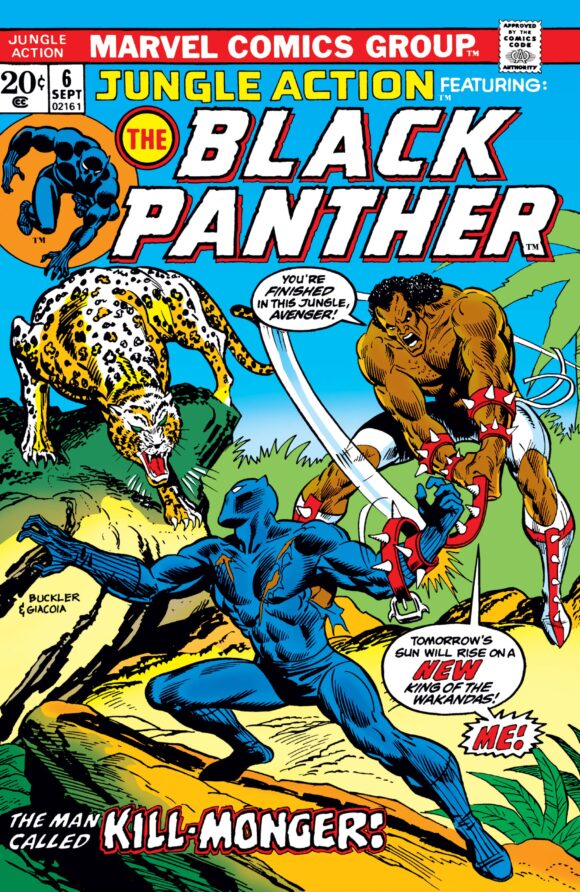
Dan adds: As you’ll see, Michael’s put together a great list of comics — many of which fall under the “I can’t believe they haven’t done this one already” category. This is one of those. Thing is, Marvel has shifted its Facsimile Edition strategy: The publisher is now going for year-long runs or themes that it can then collect in oversize Gallery Editions. This year’s Amazing Spider-Man’s first 12 black-suit issues will be one collection and the original Secret Wars will be another. Presumably, there will be a collection of all of this year’s mutant “firsts,” as well.
We should know 2025’s themes by mid-October. Fantastic Four will almost certainly be one of them. What else? We’ll see, but anniversaries, comics events and relaunches, and Marvel Studios plans are always good for clues.
—
11. Captain America #176 (Aug. 1974). It’s one thing when bad luck magnet Peter Parker junkpiles his Spider-Man costume, but when Steve Rogers, the epitome of American idealism, chucks his Captain America togs, it’s a crisis of both personal and national identity. Writer Steve Englehart’s Secret Empire — a major storyline influenced by the then-unfolding Watergate scandal that toppled a U.S. presidency — begins in this landmark issue whose captivating Romita cover alone is worth the price of a Facsimile Edition.
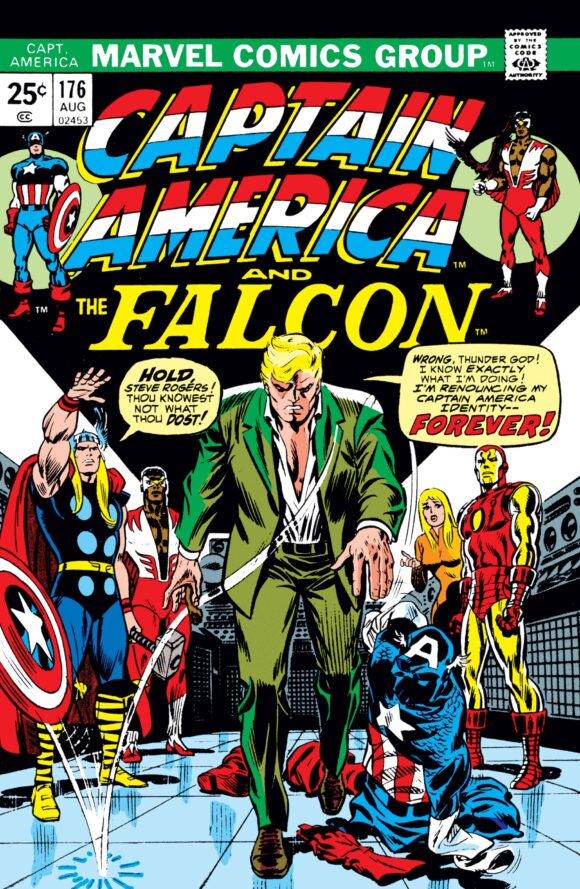
Dan: There have been surprisingly few Captain America Facsimiles and it’s startling that this isn’t one of them. With Brave New World on the horizon, I imagine that Cap is a good bet for a 2025 theme — but a focus on Sam Wilson is more likely. (Still, the Falcon played a major role in Secret Empire.)
—
10. The Monster of Frankenstein #1 (Jan. 1973). Mary Shelley’s patchwork man played second fiddle to Tomb of Dracula, Ghost Rider, and several other Marvel monster-hero books of the 1970s, but this premiere issue of Marvel’s short-lived Frankenstein run deserves a closer and wider look. Gary Friedrich offers a page-turning adaptation of the horror classic that is elevated even more by its mesmerizing illustrations by Mike Ploog. Ploog’s rendition of the Frankenstein Monster rivals Bernie Wrightson’s. A gorgeous horror comic!
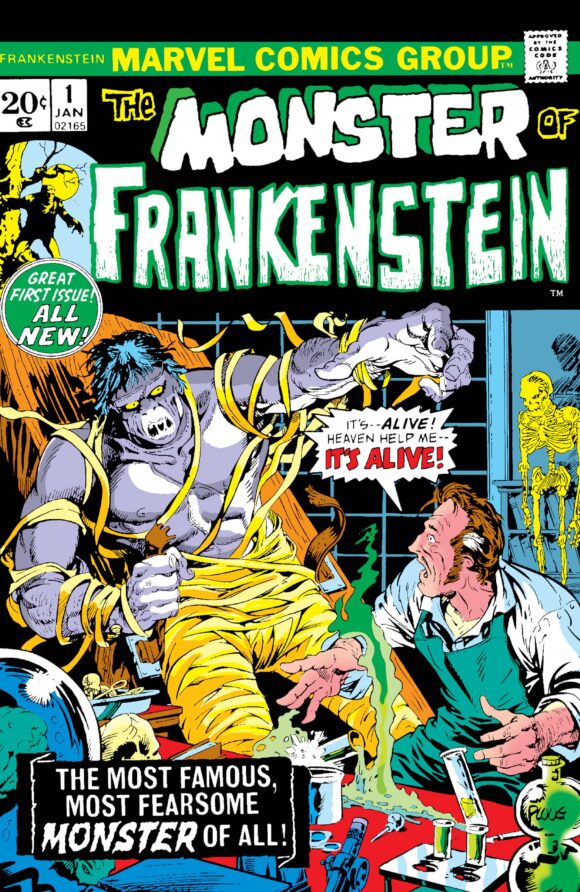
Dan: Here’s a neat idea: Marvel spends an October re-releasing a whole bunch of its Bronze Age monster comics.
—
9. Doctor Strange #1 (June 1974). While it’s tough to select just one representative issue of writer Steve Englehart and artist Frank Brunner’s trippy adventures of the Master of Mystic Arts, this key issue, spinning off of the good doctor’s tryout run in Marvel Premiere, showcases the creative team in their prime. Heady adventures for the mind and psychedelic visuals for the eye.

Dan: The 50th anniversary was this year, so it’s a missed opportunity. I do think a general theme of “Marvel anniversaries” would work, by the way. It would allow for more diverse choices. Marvel started this whole Facsimile business, but DC has surpassed them by sticking with a wide variety across different eras.
—
8. Spidey Super Stories #1 (Oct. 1974). A partnership between Marvel and the Children’s Television Workshop’s The Electric Company produced this popular, all-ages book that was a gateway for many young readers of the day. While this series has little or no bearing on Marvel’s main continuity, it boasts nostalgic value to those Bronze Age babies and would perform well among Spider-Man collectors seeing first issues starring the Wall-Crawler. Speaking of which…
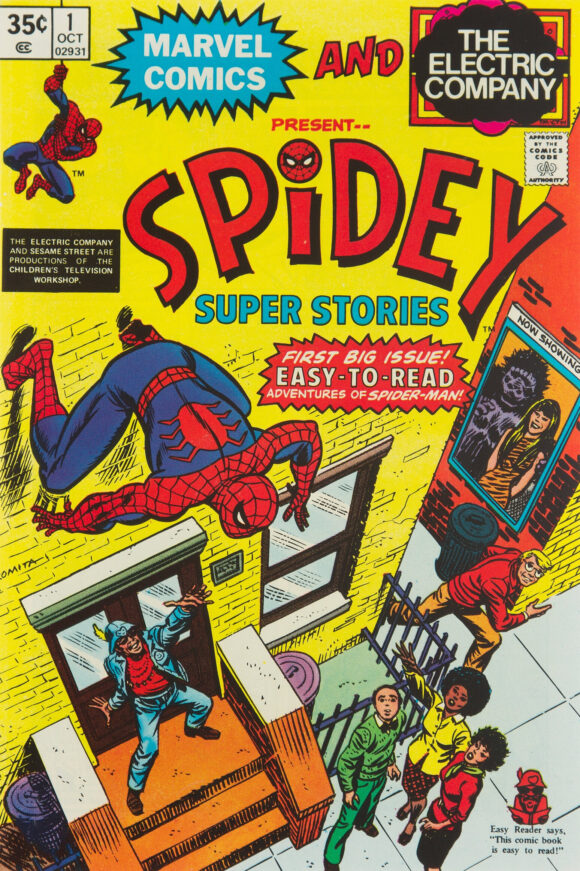
Dan adds: These issues are expensive, man! Shows there’s a demand, Marvel. And while The Electric Company is no longer around, CTW is, as Sesame Workshop. (By the way, if I had my pick, I’d go with Issue #25 — the first appearance of Web-Man!
—
7. Marvel Team-Up #1 (Mar. 1972). Marvel Team-Up was Marvel’s first attempt (after 1968’s two issues of Spectacular Spider-Man magazine) to franchise its popular Web-Slinger. This was originally intended to be a “buddy” book co-starring Spider-Man and the Human Torch, but after joining Spidey for the first three issues the Torch was replaced by rotating guest-stars for the Wall-Crawler (with Spidey being spelled by the Hulk and a few others during the series’ long run). Not only is this issue historically significant and of interest to the Spider-Man collector, it’s a fun read, a delightful holiday tale featuring the Sandman, by Roy Thomas, Ross Andru, and Mike Esposito.
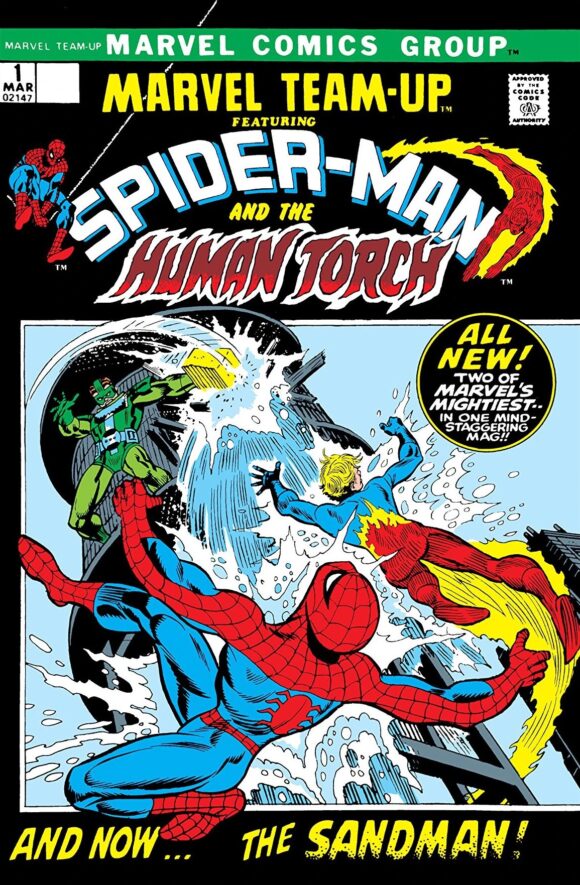
Dan adds: I’d say it’s got an outside shot with Fantastic Four a virtual lock as a 2025 theme. Either way, I know our pal Jim Beard would be happy to see this, what with his new Marvel Team-Up guide, Walking the Wider Web, out now.
—
6. Astonishing Tales #25 (Aug. 1974). The first appearance of Deathlok the Demolisher! Plotter/artist Rich Buckler (with dialogue by Doug Moench and inks by Klaus Janson) shakes up the status quo at the House of Ideas with this groundbreaking cybernetic fighting machine. The Punisher had only premiered two months earlier and Wolverine’s debut in Incredible Hulk #181 was still a couple months away, so Deathlok’s first appearance helped usher in a new wave of darker antiheroes that would rise to wider acclaim in the 1990s.
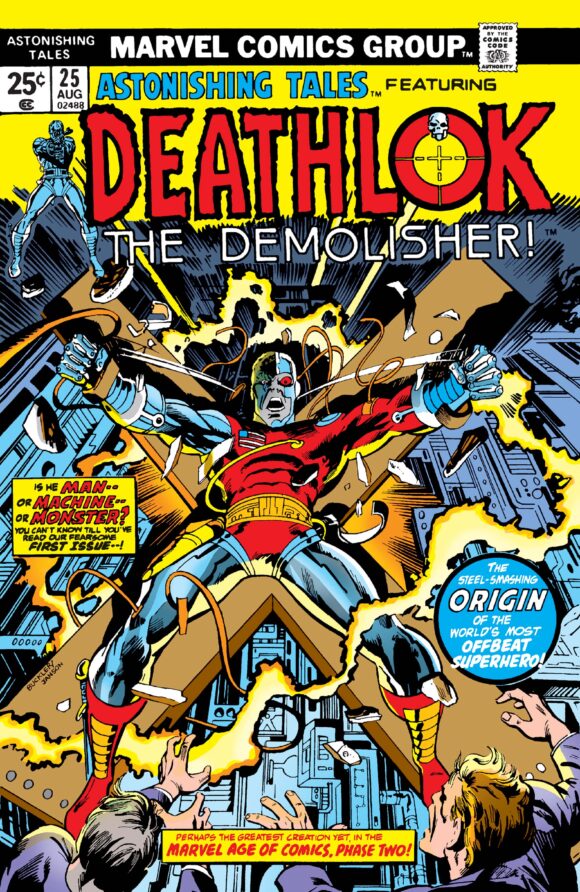
Dan adds: Hope springs eternal. The 50th anniversary was in May, but Michael is absolutely right. Great choice.
—
5. Captain Marvel #29 (Nov. 1973). With all the MCU interest afforded Thanos in recent years, it’s surprising that this issue, where Mar-Vell receives cosmic awareness from Eon, has not yet been reprinted as a Facsimile. It’s a spellbinding showcase of Jim Starlin’s revolutionary storytelling (inked by Al Milgrom) that really blew our minds back in the day — and continues to do so today!
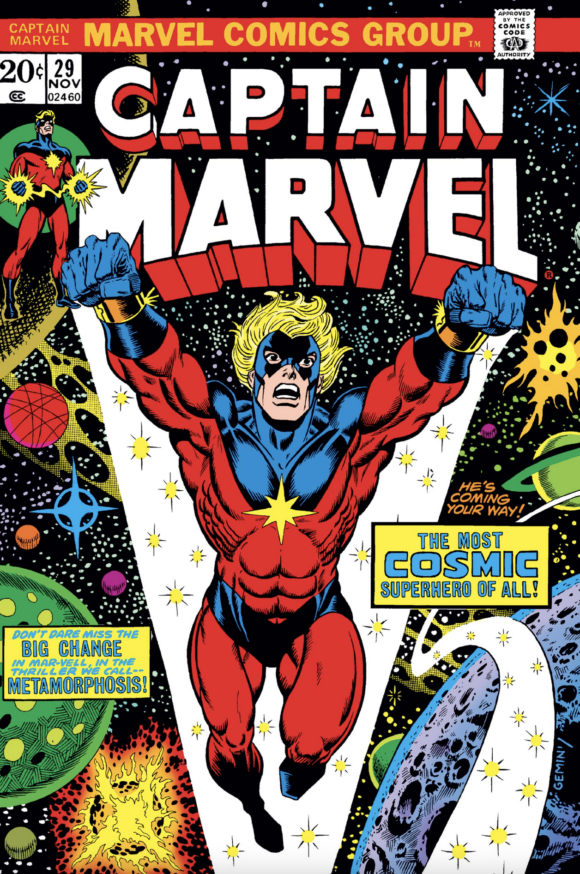
Dan adds: What he said.
—
4. Fantastic Four #176 (Nov. 1976). The Impossible Man visits the offices of Marvel Comics! I challenge you to find a single issue of a 1970s Marvel book that brings this much joy. It’s a favorite of readers that has been reprinted in several collected editions — so Marvel, why not offer us a chance to read this fan-favorite in its original format?

Dan adds: Until we know how Marvel will handle FF Facsimiles next year, this has as good a shot as any issue.
—
3. The Avengers #100 (June 1972). Avengers past and present assemble in this extraordinary issue by Thomas, illustrated with great gusto by Barry Smith. Roy and Barry show us how an anniversary edition should be done!
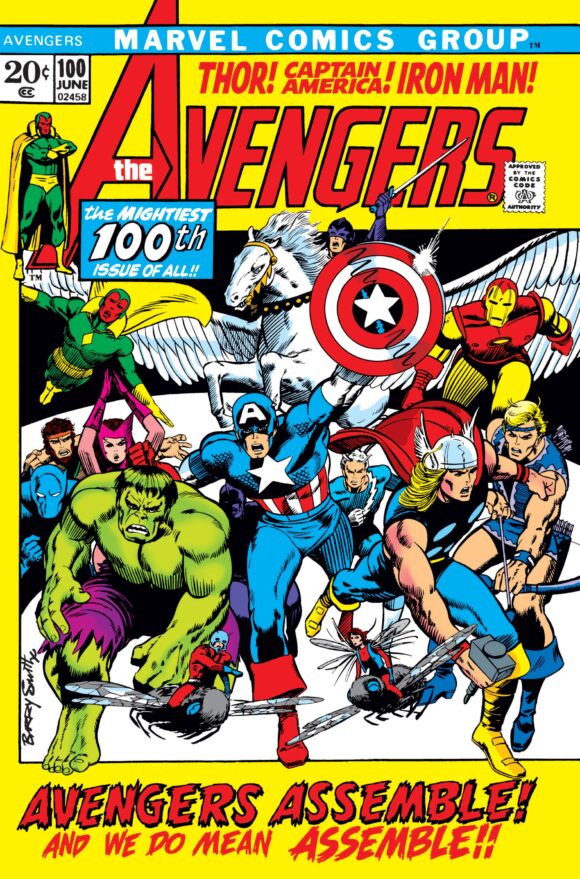
Dan adds: Don’t you want to see Jeremy Renner in that outfit? I do.
—
2. Marvel Two-in-One #50 (Apr. 1979). The Thing battles the Thing in an exciting time-travel story written and penciled by John Byrne, with FF inker Joe Sinnott. This crowd-pleasing issue offers pathos and punches, and serves as a precursor to Byrne’s forthcoming 1980s run on Fantastic Four.
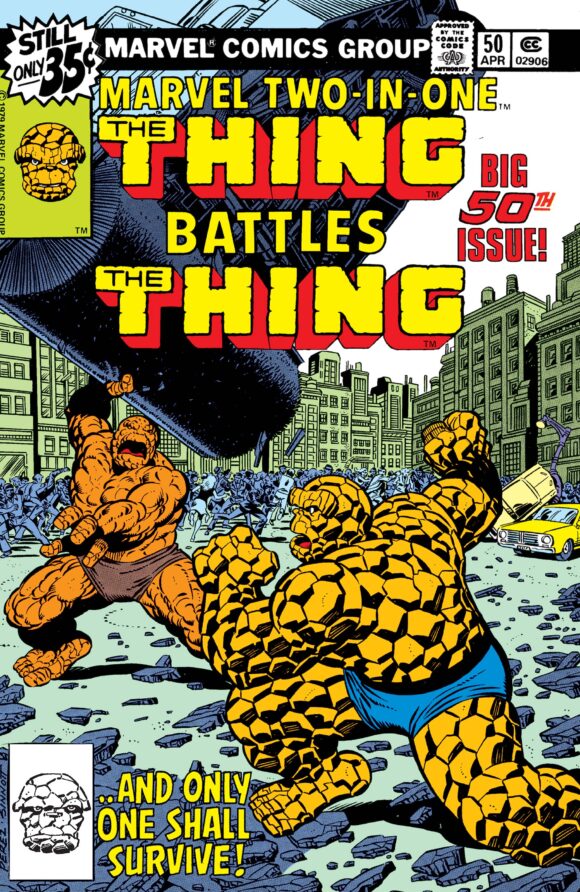
Dan adds: Once upon a time, the Thing was an A-Lister in his own right. If Feige and co. handle Fantastic Four properly, those days could be here again — making this ish a natural.
—
1. Iron Man #128 (Nov. 1979). Alcoholic Tony Stark hits rock bottom in Demon in a Bottle! by the team of David Michelinie, Bob Layton, and John Romita Jr. Although Marvel’s Iron Man movie fever has long faded, the interpretation of Tony Stark as presented by this all-star creative team inspired Robert Downey Jr.’s take on the character on screen, which essentially became the tentpole for the original MCU. Besides, this is one extraordinary comic book that deserves to be discovered by each and every Marvelite.
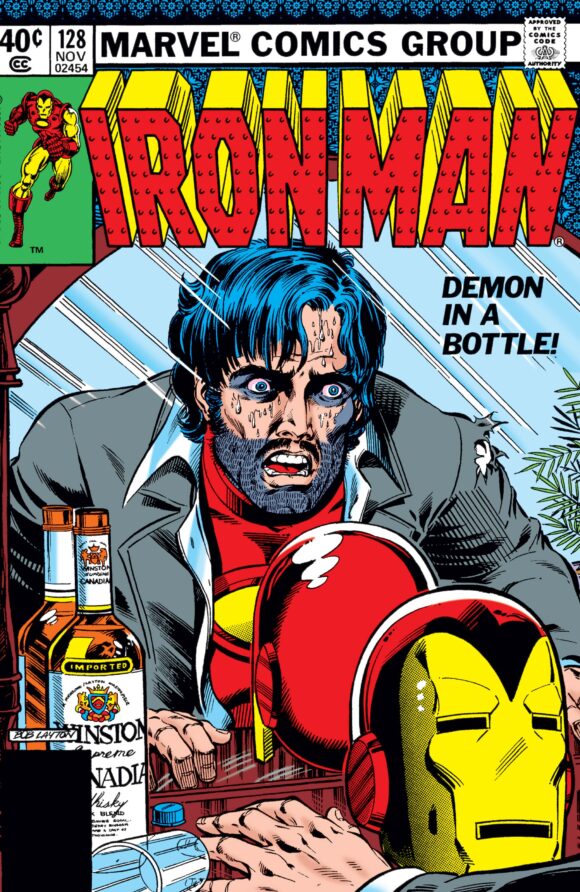
Dan adds: Another “I can’t believe they haven’t done it yet.”
—
MORE
— 13 MARVEL Facsimile Editions We’d Like to See. Click here.
— 13 GIANT-SIZE Marvel Facsimile Editions We’d Like to See. Click here.
—
Michael Eury hopes to fill many of his idle hours in retirement by reading Facsimile Editions of Bronze Age comics.

September 4, 2024
Captain America 109 and 255
Because they work together well